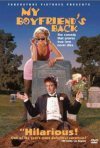Pat Bertram's Blog, page 206
February 21, 2014
In Every True Woman’s Heart
I used to be a guest on various internet radio shows, but I got burned out on the whole idea, so I haven’t been accepting any invitations. When the shows were less than an hour and focused mostly on me, they were fun, but so many of the shows featured several guests and a couple of hosts, so it was hard to know who was supposed to be talking. Also, shows with many guests to be very long, and I am not fond of talking on a phone for any length of time.
Still, when Shannon Fisher invited me to be the first guest on a new show she will be hosting, I immediately agreed. I’ve never met Shannon in person, but we are good friends. We’ve often talked about life and death via Facebook and this blog, and I admire her greatly. She’s on the board of directors of UniteWomen.org, director of Unite Against Rape, and active in various other organizations. And now she’s accepted a position as host of a show on Authors on The Air.
 Not only was I invited to be Shannon’s first guest, but A Spark of Heavenly Fire was chosen to be the first book featured on her new show: “The Authentic Woman – with Host Shannon Fisher – Perspectives on the Female Experience.”
Not only was I invited to be Shannon’s first guest, but A Spark of Heavenly Fire was chosen to be the first book featured on her new show: “The Authentic Woman – with Host Shannon Fisher – Perspectives on the Female Experience.”
Washington Irving wrote: “There is in every true woman’s heart a spark of heavenly fire, which lies dormant in the broad daylight of prosperity; but which kindles up, and beams and blazes in the dark hour of adversity.” As I read these words a decade ago, I could see her, a drab woman, defeated by life, dragging herself through her days in the normal world, but in an abnormal world of strife and danger, she would come alive and inspire others. And so Kate Cummings, the hero of my novel A Spark of Heavenly Fire was born. But born into what world?
I didn’t want to write a book about war, which is a common setting for such a character-driven story, so I created the red death, an unstoppable, bio-engineered disease that ravages Colorado. Martial law is declared, rationing is put into effect, and the entire state is quarantined. During this time when so many are dying, Kate comes alive and gradually pulls others into her sphere of kindness and generosity. First enters Dee Allenby, another woman defeated by normal life, then enter the homeless — the group hardest hit by the militated restrictions. Finally, enters Greg Pullman, a movie-star-handsome reporter who is determined to find out who created the red death and why they did it.
Kate and her friends build a new world, a new normal, while others, such as Pippi O’Brien, Greg’s fiancée, think of only of their own survival, and they are determined to leave the state even if it kills them.
The world of the red death brings out the worst in some characters while bringing out the best in others. Most of all, the prism of death and survival reflects what each values most. Kate values love. Dee values purpose. Greg values truth. Pippi, who values nothing, learns to value herself.
The women drive the book, their sparks of heavenly fire lighting up the bleak world of quarantined Colorado, showing us love in all its guises: caregiving, motherly love, friendship. romantic love, love of life.
It’s fitting that that this book is being highlighted because Shannon herself is a true woman who embodies the spark of heavenly fire the world so desperately needs.
So look for me online on March 2, 2014 at 8:00pm ET at “The Authentic Woman – with Host Shannon Fisher – Perspectives on the Female Experience.” I’m sure Shannon and I will have much to talk about!
***
Pat Bertram is the author of the suspense novels Light Bringer, More Deaths Than One, A Spark of Heavenly Fire, and Daughter Am I. Bertram is also the author of Grief: The Great Yearning, “an exquisite book, wrenching to read, and at the same time full of profound truths.” Follow Pat on Google+. Like Pat on Facebook.
Tagged: A Spark of Heavenly Fire, Authors on The Air, Shannon Fisher, The Authentic Woman, UniteWomen.org


February 20, 2014
The Logistics of a Life on Foot
Although I’ve been Dreaming of Life on Foot, hiking around the USA on the National Trails System, the logistics seem unmanageable. To hike just the Pacific Crest Trail would take a minimum of six months, assuming I could walk 10 to 20 miles a day through often-rugged terrain. And that assumption is very optimistic. I get exhausted just walking a mile or two up steep hills. Still, if walking were a way of life, I could walk a mile, rest a while, walk another mile since there would be no reason to hurry to finish the trail. Well, that’s not true. There is one reason — winter. People try to finish the trek in six months so they don’t have to deal with inclement weather — neither the heat of desert summer nor the harsh climes (and climbs) of mountain winter.
Like other through-hikers, I could probably send food ahead so that I wouldn’t have to cart a wagonload of provisions. I could probably map out the watering holes (and from what I have heard, some of these holes are little more than stagnant puddles). I could perhaps even get in shape for such a trip (though the trip itself would get met me in shape). But so many other problems seem insurmountable. For example, what would I do with my car? Do I park it at the trailhead and hope it is still there (and the battery still charged) when I return? And if so, how do I  return to the car? Would it be better to put the vehicle in storage, and hope I can find a ride to the trailhead? Or do I sell it, and use rental cars in between jaunts? (Since I don’t have a charge card, renting cars isn’t really an option.)
return to the car? Would it be better to put the vehicle in storage, and hope I can find a ride to the trailhead? Or do I sell it, and use rental cars in between jaunts? (Since I don’t have a charge card, renting cars isn’t really an option.)
And what about connectivity? I suppose I could just take off and forget about computers and phones and such, but this blog is important to me. I could write my blogs on the trail, and then post them when I got back to civilization, but that could be many weeks, or even months. I could get a solar charger, which would probably be necessary since a working phone would be nice to have in an emergency, but I have a hunch most of the trail(s) would be off the grid anyway.
And what about mosquitoes? Mosquitoes love to feast on me, but my body hates them. I get sick from even a single sting. And I’m allergic to mosquito repellent, even — especially — citronella oil. Until my current (temporary) relocation to the desert, I have always had to be careful to be inside by dusk. It’s only because this seems to be a mosquito-free area that I’ve been able to go walking at night with the Sierra Club. So the idea of camping out in bug season is a bit ludicrous. Can’t you just see me, trying to hike, swathed in yards and yards of mosquito netting?
And what about my eyeglasses? Do I need to have extra pairs with me or stashed in my sent-ahead supply boxes? The same with shoes. Do I break in two or three pairs of shoes, and have those packed in the supply boxes, too? I am not on any medication, but I do take supplements to keep me healthy. Do I forgo those and hope I don’t get colds or allergies or pains that don’t go away?
I thought my original idea of living on the road — perhaps sampling the trails or visiting all the national parks and in between staying at motels or extended stay hotels — was complicated, but that plan seems simple in comparison to a life on foot. I would be out in the wilds for just a few days at a time, I would be not too far from my car (which would provide emergency shelter or an emergency getaway), and I would be able to access my blog and recharge my phone every few days. I could even pass out gifts with information about my books to everyone I see. That was the original purpose of an extended trip — to promote my books — but the idea seems to metamorphose the more I think about it.
And there is a lot to think about. Of course, since my current responsibilities might not end for several years (I am looking after my 97-year-old father, and there is a good chance he could live to be 100), I have plenty of time to wonder, and dream, and prepare for whatever the future might have in store for me.
***
Pat Bertram is the author of the suspense novels Light Bringer, More Deaths Than One, A Spark of Heavenly Fire, and Daughter Am I. Bertram is also the author of Grief: The Great Yearning, “an exquisite book, wrenching to read, and at the same time full of profound truths.” Follow Pat on Google+. Like Pat on Facebook.
Tagged: hiking, Pacific Crest Trail, planning a hike, through hikers


February 19, 2014
Dreaming of Life on Foot
Once upon a time when I was going through a rough patch in my life, I considered just taking off and walking the length of the Pacific Crest Trail. I figured by the end of the hike, things would be different, or I would.
The rough patch passed, as bad times often do, but I have retained that image of hiking the length of the trail. I don’t remember why I chose the Pacific Crest Trail since I was also enamored with the idea of the Appalachian Trail. Perhaps I was confusing the Pacific Crest Trail with the Pacific Coast Highway, and envisioned a walk along the  coastline. Surprising to me now is that although I lived in Colorado, I wasn’t aware of the Continental Divide Trail, or if I was aware of it, perhaps it was too close to home to seem romantic.
coastline. Surprising to me now is that although I lived in Colorado, I wasn’t aware of the Continental Divide Trail, or if I was aware of it, perhaps it was too close to home to seem romantic.
And that’s what the idea was — romantic. I know this now. Recently I’ve been on a couple of short hikes on the Pacific Crest Trail (a thrilling taste of that old dream), and I’ve been hearing all sorts of stories, suggestions, cautions from my fellow hikers. For example, my idea of hiking without any sort of preparation, just finding the start of the trail and heading out, is not practical. Through hikers, those who hike the entire trail from top to bottom (or rather, bottom to top — they generally start out at the Mexican border and walk up to the Canadian border) often spend months in preparation, drying foods, mapping water holes, sending ahead care packages to themselves at various places along the trail. They need to be prepared for emergencies, all weather conditions, and whatever might overtake them on the trail. (Apparently, most through hikers make the trek alone, so my idea of walking solo was not too farfetched.)
Someday my current responsibilities — looking after my 97-year-old father and dealing with my perhaps bipolar brother — will end, and then what? What will I do? Who will I become? I’ve been checking out various trails in the US, and if I were so inclined, I could spend the rest of my life on foot. Thirty different trails comprise the National Trails system, and many states seem to have additional trails, such as the Oregon Coast Trail that extends for 400 miles from the Columbia River to the California Border, and the Colorado Trail that runs 486 miles from Waterton Canyon southwest of Denver to Durango.
A friend of mine recently bought a motor home, and she plans to live on the road until she finds a place to settle down. That, too, is a romantic idea (also practical), but not for me. I prefer to be less cumbered, to go lightly through life. But so lightly as to live with only that which I can carry or send on ahead? I don’t know. Still, I can’t help wondering. And dreaming . . .
***
Pat Bertram is the author of the suspense novels Light Bringer, More Deaths Than One, A Spark of Heavenly Fire, and Daughter Am I. Bertram is also the author of Grief: The Great Yearning, “an exquisite book, wrenching to read, and at the same time full of profound truths.” Follow Pat on Google+. Like Pat on Facebook.
Tagged: Appalachian Trail, Colorado Trail, Continental Divide Trail, National Trails system, Oregon Coast Trail, Pacific Crest Trail, through hikers, thru-hikers


February 18, 2014
Doorways and Exploding Eggs
So often, it seems, we get up from our chairs in front of the computer to do something or get something in the next room that seems relevant at the time (yes, there is life away from the computer!!), but when we get where we are going, we have forgotten why it was so important to go there in the first place. Sometimes, if we go back to where we were when we got the inclination to do or get that something, we can remember, but other times the memory has completely disappeared.
Gabriel Radvansky, Sabine Krawietz. and Andrea Tamplin, a team of researchers at the University of Notre Dame, have shown that walking through a doorway makes us forget. They postulate that our brains are wired to keep the most relevant information handy until the need for it expires, and then ou r brains purge those details in preparation for new “need-to-know” information. (Please excuse this tangent, but I am laughing and had to share the joke. I just checked synonyms for “information” on MSWord, which I am using to write this post, and the only synonyms MS gives are: “in order,” “in sequence,” “in turn,” “in rank,” and “in a row.” Apparently, MS thinks “in formation” is a single word. Or maybe they think information is in such scant supply that we don’t need a synonym.)
r brains purge those details in preparation for new “need-to-know” information. (Please excuse this tangent, but I am laughing and had to share the joke. I just checked synonyms for “information” on MSWord, which I am using to write this post, and the only synonyms MS gives are: “in order,” “in sequence,” “in turn,” “in rank,” and “in a row.” Apparently, MS thinks “in formation” is a single word. Or maybe they think information is in such scant supply that we don’t need a synonym.)
According to the Notre Dame researchers, going through a doorway signifies that whatever information being held at the ready in our brains is no longer vitally important, and so our brains purge that information. In other words, we forget. Makes sense — we can’t keep every thought at the forefront of our brains, especially since a lot of what we learned in the past is no longer relevant. For example, we no longer have to remember how to crawl or how to let our mothers know our diapers need to be changed. Nor, in this digital age, do we need to remember where to put decimal points when multiplying percentages. For that matter, we don’t even need to remember how to add and subtract.
I have a hunch hallways are much like doors. Cross a threshold, walk down a hall and through a doorway into another room, and we are lucky to remember who we are, let alone what we were doing.
In the past couple of weeks, I have managed to blow up two pans of eggs I was hardboiling. Yep. Blew them up. Loud cracks of explosions. Bits of egg all over the kitchen. I do know how to make perfect hardboiled eggs, of course. The problem is that I do not have the patience to stand around waiting for the water to boil (I know for a fact watched pots do boil, it just seems like they don’t). I planned to set the timer, but the timer was next to my computer where I left it the last time I used it (because that’s where I was when the timer was set to go off, of course. What I said above about there being life away from the computer? Ignore that. I spend so much time online, I’m not sure it’s true.)
To set the timer, all I had to do was walk from one room, down a hall, and into another, and in those few seconds, I completely forgot about the eggs. Forgot to set the timer. It wasn’t until I heard the loud cracks of the explosion and went to investigate that I remembered. (I’m not sure why the eggs exploded. The water had long boiled off, so perhaps the heat conducted by the stainless steel pan was so great the moisture inside had turned to steam, and since the shell couldn’t expand with the steam, the egg exploded.)
The explosion wasn’t my fault, of course. It was the fault of a faulty memory system that doesn’t allow us to retain a thought from one room to the next. Yeah, that’s it. Not my fault at all.
***
Pat Bertram is the author of the suspense novels Light Bringer, More Deaths Than One, A Spark of Heavenly Fire, and Daughter Am I. Bertram is also the author of Grief: The Great Yearning, “an exquisite book, wrenching to read, and at the same time full of profound truths.” Follow Pat on Google+. Like Pat on Facebook.
Tagged: exploding eggs, need to know, not my fault, Notre Dame and memory study, walking through a doorway and memory, walking through doorway and forgetting


February 17, 2014
On the Trail Again
A couple of weeks ago was the first time I hiked a bit of the Pacific Crest Trail (five miles round trip), and it was an incredible experience. The trail was well maintained, no huge climbs up or down, even footing, gorgeous views.
This past weekend I hiked another bit of the trail (just a little over four miles this time), and it was a completely different experience.
Instead of parking by a lake and heading immediately into the mountains, we parked by a heavily trafficked six-lane highway, then took a spooky trip through a long, damp water drainage tunnel under the highway.
We hiked past an abandoned house, through a culvert under the railroad tracks while a freight train went by overheard,
across a small wooden bridge,
and then we finally got to a part of the trail that was easy to traverse.
After that flat part of the trail, it climbed steeply into the rocks,
but it was all worth while because of the stunning views.
***
Pat Bertram is the author of the suspense novels Light Bringer, More Deaths Than One, A Spark of Heavenly Fire, and Daughter Am I. Bertram is also the author of Grief: The Great Yearning, “an exquisite book, wrenching to read, and at the same time full of profound truths.” Follow Pat on Google+. Like Pat on Facebook.
Tagged: culvert, hiking, Pacific Crest Trail, wooden bridge


February 16, 2014
One More Post About Philip Seymour Hoffman (Or Rather, Philip Hoffman)
I hadn’t intended to write about Philip Hoffman — there have been more than enough blog posts written about him — but I’ve been thinking of the first time I saw him in a movie, so here is one more post about him.
One of my favorite movies is the 1993 film My Boyfriend’s Back. The first time I ever saw Philip Seymour Hoffman was in that black comedy, though back then, he only called himself Philip Hoffman. Of course, that was long before he got his reputation for being such a great actor, so perhaps two names were all he needed. Still, his small role made  a big impression on me. Made a big impression on his head, too. In the film, the hero, Andrew Lowry, comes back from the dead because the prettiest girl in school had agreed to go to the prom with him. (He’d saved her life, so what else could she do? Besides, he was dying . . .)
a big impression on me. Made a big impression on his head, too. In the film, the hero, Andrew Lowry, comes back from the dead because the prettiest girl in school had agreed to go to the prom with him. (He’d saved her life, so what else could she do? Besides, he was dying . . .)
There is considerable prejudice in the high school against “dead kids,” and Philip Hoffman tried to kill Lowry — Chuck, Philip’s character, wasn’t exactly the brightest kid in school, so it never occurred to him he couldn’t kill someone who was already dead. Still, he took the axe from the emergency box on the wall (um . . . please tell me no one actually puts axes in schools anymore!). He swung the axe back to get momentum for a good swing, and because he was holding the axe backwards, he axed himself in the head. It doesn’t sound funny as I write this, but then, so often that is the nature of black comedy — the humor is in the moment.
The writer, Dean Lorey, penned some great lines.
For example, Dr. Bronson, who examines Chuck tells Big Chuck, Hoffman’s father, “I’m afraid I have some bad news. Your boy is very sick. He’s lost a massive amount of blood, and his pulse and retinal response are poor, and as you can see there’s an axe sticking out of his head.
Big Chuck: He’s not sick, you idiot, he’s dead!
Dr. Bronson: Oh, everybody’s a doctor. You think maybe I could make the diagnosis?”
Missy (the prettiest girl in school) tries to renege on her promise to go to the prom with the dead kid, and Lowry responds. “You may not know this, Missy, but I ate Chuck for YOU!” Missy’s friend tells her how lucky she is: “God, my boyfriend won’t even pump gas for me.”
I’m not sure why I’m telling you this, except that all the talk about Philip Seymour Hoffman reminded me of this movie, and it makes me smile. As great an actor as Hoffman is purported to be, he still had to start somewhere, and his “somewhere” was in a little known, badly acclaimed, poor money maker that is one of filmdom’s hidden gems.
It reminds me that no matter how serious we are about our writing, there is always room for a bit of humor, even black humor. It’s what makes our writing — and characters — memorable.
(An odd little mystery — Traci Lind, who played Missy, seems to have disappeared, at least disappeared from movies and the internet. Wherever she is, I hope she is happy. I always enjoyed seeing her.)
***
Pat Bertram is the author of the suspense novels Light Bringer, More Deaths Than One, A Spark of Heavenly Fire, and Daughter Am I. Bertram is also the author of Grief: The Great Yearning, “an exquisite book, wrenching to read, and at the same time full of profound truths.” Follow Pat on Google+. Like Pat on Facebook.
Tagged: Dean Lorey, My Boyfriend’s Back, Philip Seymour Hoffman, Traci Lind


February 15, 2014
Being Nice
For many years, I was subject to depression and debilitating allergies that so enervated me, getting out of bed in the morning was about all I could handle. Then there were the years my life mate/soul mate was dying, where I hunkered down in my emotional foxhole, trying to protect myself from the pain with which life was bombarding us. During these times, whenever I’d go out among people, all I ever seemed to see were happy, healthy, and energetic folks, which made me feel as if I were alone in my misery.
It wasn’t until I signed up for Facebook and started making contact with all sorts of people that I discovered the truth  in their status updates. Everyone is struggling with something — illness, disability, debility, depression, grief. Even if people aren’t struggling with such a difficulty themselves, they are taking care of someone with a problem. The strong, healthy people I saw were probably normally traumatized people on their good days.
in their status updates. Everyone is struggling with something — illness, disability, debility, depression, grief. Even if people aren’t struggling with such a difficulty themselves, they are taking care of someone with a problem. The strong, healthy people I saw were probably normally traumatized people on their good days.
I’m learning to be nice to everyone, even people with a bad attitude. Anger, rudeness, pettiness, are all signs of unhappiness and discontent, and chances are, the misery stems from actual problems, not just a desire to be mean. In a strange sort of way, how people treat me is not my problem. Their inconsideration is a reflection of them, not me. My only responsibility is in my own reaction, and — in an ideal world — I would always choose to be nice. Life of course, is not always ideal, and I sometimes I let my own problems dictate my behavior, especially when those problems entail a lack of sleep, such as the episodes with my afflicted brother.
One of my favorite scenes in a film is in the 1989 movie Roadhouse where Patrick Swayze is discussing his policy with the bouncers. “Be nice,” he says. He goes on to tell them that no matter what anyone does, be nice. And he ends, “I want you to be nice until it’s time to not be nice.” It’s a good policy for anyone, being nice.
Sure, we have problems, but everyone else does too. So let’s pretend this is an ideal world, and let us all be nice.
***
Pat Bertram is the author of the suspense novels Light Bringer, More Deaths Than One, A Spark of Heavenly Fire, and Daughter Am I. Bertram is also the author of Grief: The Great Yearning, “an exquisite book, wrenching to read, and at the same time full of profound truths.” Follow Pat on Google+. Like Pat on Facebook.
Tagged: be nice, everyone has problems, Facebook, Patrick Swayze, people with bad attitudes, roadhouse


February 14, 2014
Wishing You Life and Love
Mahatma Ghandi said, “Where there is love, there is life.” On this day set aside for celebrating love, I wish you a life filled with love.
***
Pat Bertram is the author of the suspense novels Light Bringer, More Deaths Than One, A Spark of Heavenly Fire, and Daughter Am I. Bertram is also the author of Grief: The Great Yearning, “an exquisite book, wrenching to read, and at the same time full of profound truths.” Follow Pat on Google+. Like Pat on Facebook.
Tagged: Mahatma Ghandi, Valentine's Day


February 13, 2014
Lies, Damned Lies, and Statistics
“There are three kinds of lies: lies, damned lies, and statistics.”
This quote is usually attributed to Mark Twain, and in fact, he did use it in his biography, but he himself quoted it. Twain’s actual words were: ‘The remark attributed to Disraeli would often apply with justice and force: “There are three kinds of lies: lies, damned lies, and statistics”.’ But Disraeli’s biographer claims that the renowned statesman never used that particular phrase.
Some people postulate that Twain heard the phrase from Leonard Henry Courtney, a British economist and politician who said, in an August 1895 speech in New York, ‘After all, facts are facts, and although we may quote one  to another with a chuckle the words of the Wise Statesman, “Lies – damn lies – and statistics,” still there are some easy figures the simplest must understand, and the astutest cannot wriggle out of.’ Courtney didn’t attribute the saying to Disraeli, and in fact, “wise statesman” might not even refer to a specific person, but a way of attributing the phrase to . . . whoever.
to another with a chuckle the words of the Wise Statesman, “Lies – damn lies – and statistics,” still there are some easy figures the simplest must understand, and the astutest cannot wriggle out of.’ Courtney didn’t attribute the saying to Disraeli, and in fact, “wise statesman” might not even refer to a specific person, but a way of attributing the phrase to . . . whoever.
The earliest instance of the phrase found in print is from a letter that seems to indicate the saying was in common usage before Courtney’s speech, and was so old no one knew anymore who said it. The letter dated June 8, 1891 and published June 13, 1891 states: “Sir,–It has been wittily remarked that there are three kinds of falsehood: the first is a ‘fib,’ the second is a downright lie, and the third and most aggravated is statistics. It is on statistics and on the absence of statistics that the advocate of national pensions relies…..”
I don’t suppose it matters who said “There are three kinds of lies: lies, damned lies, and statistics.” I don’t suppose it matters if there are, in fact, three kinds of lies, though I do know statistics can’t truly be a kind of lie. They are simply bits of data that have been compiled from a large sampling. People, of course, use these bits of data to bolster whatever truth or falsehood they happen to be peddling, and they are able to do this because of the very nature of statistics. For example, although everyone in the United States knows how abnormal this winter is, statistics show that on average, this is simply a normal winter — the warmth and dryness of the west balances the cold and snow of the east, giving us the lie of a normal winter.
Lucky for me, I happen to be on the warm, dry end of the “lie.” For all of you who are living on the opposite side of the land, be safe and try to stay warm.
***
Pat Bertram is the author of the suspense novels Light Bringer, More Deaths Than One, A Spark of Heavenly Fire, and Daughter Am I. Bertram is also the author of Grief: The Great Yearning, “an exquisite book, wrenching to read, and at the same time full of profound truths.” Follow Pat on Google+. Like Pat on Facebook.
Tagged: Disraeli quote, lies- damned lies-and statistics, Mark Twain quote, statistics, three kinds of lies, wise statesman


February 12, 2014
Sundowners Syndrome and Other Night Time Horrors
For many people, night is a time of relaxation and rest, especially when it comes time to sleep, but for others, night is . . . well, it’s a nightmare.
For example, Sundowners Syndrome frequently affects people with Alzheimer’s and dementia, and sometimes elderly hospital patients. These people react to the sun going down with confusion, anxiety, aggressiveness, agitation, restlessness, anger, even disorientation and hallucinations. My father had such problems when he was hospitalized for an operation a few years ago, and the inordinate anxiety lasted for months afterwards. It’s one of the reasons I am here to look after him. Although at 97 years of age, he can still mostly take care of himself, he does need someone to do the things he can’t do for himself such as grocery shopping, some cooki ng, cleaning, etc. More than that, though, he needs someone here at night because he is prone to panic attacks when he is alone after dark.
ng, cleaning, etc. More than that, though, he needs someone here at night because he is prone to panic attacks when he is alone after dark.
Those who suffer from bipolar disorder or narcissistic personality disorder seem to be afflicted with something similar to Sundowners syndrome, especially when it comes to night rages. These people can often control themselves during the light of day, but as the night progresses, their rage escalate, which makes even the generally well-balanced family members miserable, angry, and depressed.
Such night rages are often accompanied by insomnia and sleep deprivation, though I don’t know whether the lack of sleep is the result of the rage or a contributing factor. Although no one knows for sure what causes such night rages, there are various surmises. The rages could be a result of the build-up of stress during the day. They could be a result of fragmented circadian rhythms. Or they could have a biological basis, perhaps due to a disruption in the cholinergic system. (The cholinergic system is the network of nerve cells that uses acetylcholine in transmitting nerve impulses.)
I’m very aware of this nightmarish cycle since so often my dysfunctional brother inflicts his rage on me. He doesn’t physically inflict his rage on me, just verbally, though the fury he focuses on me sometimes feels like a physical assault — his anger is that powerful. Sometimes his anger isn’t directed at me specifically. He has a whole list of people who have “ruined his life” and he nourishes his anger against them as if his fury were a venomous hothouse plant. He seems to have such a stake in this anger that he cannot let it go, but what that stake is, I don’t know. Perhaps his rage makes him feel alive. Perhaps he is afraid of owning up to his own culpability in how he has ended up. Perhaps some sort of inner demon has him in thrall.
This conjecture, of course, is futile. He seems to have at least two cyclical patterns of disorder (bipolar swings and narcissistic rage, though he could have Sundowners Syndrome or something I have yet to identify — perhaps even alcohol-induced dementia), but since he has never been diagnosed, I have no idea that the truth is. All I know is that his night rages are impossible to predict, control, or deal with.
Because of him, my nights have become rather stressful, though occasionally, when his all his cycles wind down, so does he, and peace reigns. I have learned, however, never to take the quiet nights as a sign of things getting better, but simply to be grateful for them.
***
Pat Bertram is the author of the suspense novels Light Bringer, More Deaths Than One, A Spark of Heavenly Fire, and Daughter Am I. Bertram is also the author of Grief: The Great Yearning, “an exquisite book, wrenching to read, and at the same time full of profound truths.” Follow Pat on Google+. Like Pat on Facebook.
Tagged: bipolar disorder, dysfunctional brother, narcissistic rage, narcisstic personality disorder, night rages, sundownder syndrome











